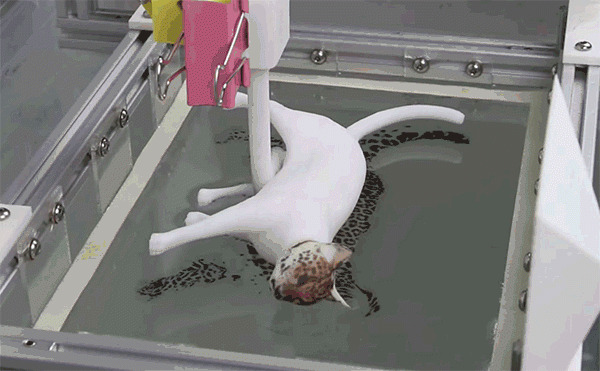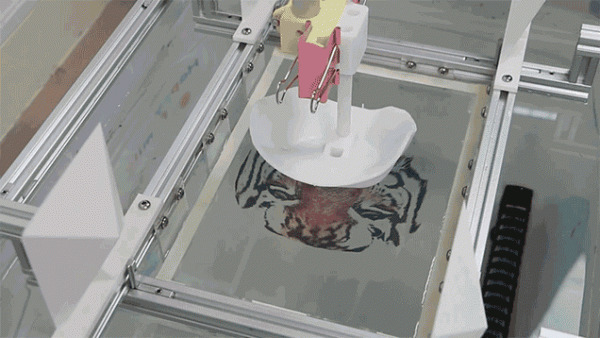Hydrographic Printing Adds Detailed Paint Jobs To 3D-Printed Objects
3D printing allows for creating unique and complex objects, but detailed, mechanical painting of such a diverse range of shapes has proven difficult. Water-transfer printing has been used for everything from car dashboards to press-on nails, but the technique falls short when trying to combine "complex shapes" with more detailed paintings. Previously, it was unpredictable how the paid would distort around complex shapes. A new technique for water-transfer printing has been created by a team of researchers from Zheijiang University in China. From knick knacks to 3D-printed leopards and tiger masks, detailed painting of complex objects can now be achieved through water transfers.
The researchers' official name for their technique is "computational hydrographic printing." The group uses a 3D vision system to simulate the way an object will distort the liquid it enters. By predicting distortion, they can take an intended image and distort it accordingly, creating a flawless overlay.
They lay a thin sheet of colored PVA film, complete with the distorted image, and as the object is submerged, the printed film wraps precisely around the object's curves, creating a perfectly painted 3D object.

This isn't the first time water transfer printing has been used. It's already a popular technique to paint auto parts, but in these examples thicker sheets of film are used to coat the auto parts. When thinner films are used, the designs aren't affected by distortion because they are only splatter-painted designs. The group hopes to use their technology to bring hydrographic printing to a new range of complex objects that was beyond the scope of previous techniques.

Check out this video from the research group, detailing their method.
Source: Wired
